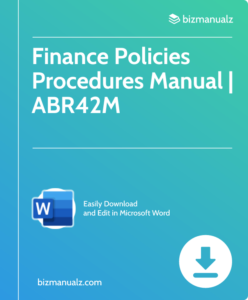What is Cash Coverage Ratio?

In the realm of financial analysis, the cash coverage ratio is an essential tool that allows businesses and investors to assess a company’s ability to cover its interest payments on outstanding debt. This key performance indicator (KPI) is calculated by dividing a company’s cash flow from operations by its total interest expense. Understanding the intricacies of this ratio is paramount for individuals involved in finance and accounting, as it enables businesses to evaluate their borrowing capacity and investors to gauge the financial health of potential investment opportunities. What is cash coverage ratio?
What is Cash Coverage Ratio?
Definition of Cash Coverage Ratio
Cash Coverage Ratio is a financial metric that measures a company’s ability to cover its financial obligations with its cash flows. It provides insights into the company’s ability to generate sufficient cash to meet its interest payments, dividends, income taxes, and capital expenditures.
The ratio indicates the company’s financial health and its ability to withstand unforeseen financial challenges. By providing a glimpse into a company’s liquidity and its ability to service its debt obligations, the cash coverage ratio proves to be a valuable metric in financial decision-making.
Importance of Cash Coverage Ratio
The Cash Coverage Ratio is an essential tool for investors, lenders, and financial analysts as it helps assess the company’s ability to meet its financial obligations. It provides a clearer picture of the company’s cash flow generation potential and its ability to handle debt payments, dividend distributions, and capital investments.
By tracking the Cash Coverage Ratio, stakeholders can make informed decisions regarding investment opportunities, lending decisions, and financial risk management.
Formula for Cash Coverage Ratio
The Cash Coverage Ratio is calculated by dividing the company’s operating cash flow by its total cash obligations. The formula for Cash Coverage Ratio is as follows:
Cash Coverage Ratio = Operating Cash Flow / (Interest Expenses + Dividends Paid + Income Taxes + Capital Expenditures)
Operating Cash Flow refers to the cash generated from the company’s primary business operations, while Interest Expenses represent the interest payments on the company’s debt. Dividends Paid denotes the cash distributed to shareholders, and Income Taxes represent the company’s tax obligations. Lastly, Capital Expenditures indicate the cash spent on acquiring or maintaining fixed assets.
Understanding Cash Coverage Ratio
The Cash Coverage Ratio measures the ability of a company to generate enough cash to meet its financial obligations.
What Does Cash Coverage Ratio Measure?
It reflects the company’s cash flow position and its capacity to cover interest payments, dividends, income taxes, and capital expenditures. Additionally, the ratio provides insights into the company’s solvency and its ability to weather potential financial hardships.
Why is Cash Coverage Ratio Used?
Cash Coverage Ratio is used to assess the financial stability and performance of a company. By calculating the ratio, stakeholders can evaluate if a company generates sufficient cash flow to support its operations and meet its financial obligations. This information is vital for making investment decisions, evaluating borrowing capacity, and determining the overall financial health of a company.
How is Cash Coverage Ratio Calculated?
As mentioned earlier, the Cash Coverage Ratio is calculated by dividing the company’s operating cash flow by its total cash obligations. By comparing the company’s cash inflows from its operations to its cash outflows for various financial obligations, the Cash Coverage Ratio quantifies the company’s ability to meet those obligations.
Components of Cash Coverage Ratio
Operating Cash Flow is the amount of cash generated from a company’s primary business activities.
Operating Cash Flow
It includes cash received from the sale of goods or services and excludes any non-operational income or expenses. Operating Cash Flow measures the company’s ability to generate cash from its core operations.
Interest Expenses
Interest Expenses represent the cost of borrowing for a company. It includes the interest paid on loans, bonds, or any other form of debt. Interest Expenses reflect the financial burden of the company due to debt.
Dividends Paid
Dividends Paid refers to the cash distributed to shareholders as a return on their investment. It represents a portion of the company’s profits transferred to its shareholders.
Income Taxes
Income Taxes represent the tax obligations of the company. It includes the corporate income tax that the company is required to pay based on its profits.
Capital Expenditures
Capital Expenditures refer to the cash spent on acquiring or maintaining fixed assets such as buildings, machinery, or equipment. These expenditures represent a company’s investment in the long-term productive capacity of its business.
Interpreting Cash Coverage Ratio
An ideal Cash Coverage Ratio is typically considered to be above 1. A ratio above 1 indicates that the company generates enough cash to cover its financial obligations.
Ideal Cash Coverage Ratio
A higher ratio signifies a stronger financial position, as the company has a greater ability to make its interest payments, pay dividends, meet its tax obligations, and invest in capital expenditures.
Significance of Different Cash Coverage Ratio Results
Different results of the Cash Coverage Ratio hold different implications for the financial health of a company. A ratio below 1 indicates that the company does not generate sufficient cash flow to meet its financial obligations.
This suggests a high risk of default or an unsustainable financial position. A ratio above 1 indicates that the company generates enough cash flow to meet its obligations, with a higher ratio indicating a stronger financial position.
Comparison with Industry Benchmarks
When interpreting the Cash Coverage Ratio, it is important to compare the company’s ratio with industry benchmarks. Industry benchmarks provide a reference point against which the company’s performance can be evaluated.
If a company’s ratio is significantly lower than the industry average, it may indicate potential weaknesses or inefficiencies in managing its cash flow.
Factors Affecting Cash Coverage Ratio
The operating performance of a company directly influences its Cash Coverage Ratio.
Operating Performance
A company with strong sales, efficient cost management, and high-profit margins is more likely to generate sufficient cash flow to cover its financial obligations.
Interest Rates
Changes in interest rates can affect a company’s Cash Coverage Ratio. Higher interest rates increase the company’s interest expenses, which can lower its ability to generate sufficient cash flow to cover its financial obligations. Conversely, lower interest rates can reduce interest expenses, improving the company’s Cash Coverage Ratio.
Tax Rates
The tax rates applicable to a company’s profits impact its Cash Coverage Ratio. Higher tax rates decrease the cash available to cover financial obligations, while lower tax rates can increase the company’s cash flow and improve its ratio.
Capital Expenditure Decisions
The level of capital expenditure made by a company affects its Cash Coverage Ratio. Significant capital expenditures can reduce the company’s available cash flow, potentially impacting its ability to meet its financial obligations. Prudent capital expenditure decisions are necessary to maintain a healthy Cash Coverage Ratio.
Dividend Policies
The company’s dividend policies also play a role in determining its Cash Coverage Ratio. Higher dividend payments reduce the available cash that could be used to cover financial obligations. Companies with conservative dividend policies may have a better Cash Coverage Ratio.
Pros and Cons of Cash Coverage Ratio
Cash Coverage Ratio provides a comprehensive measure of a company’s ability to meet its financial obligations.
Advantages of Cash Coverage Ratio
It considers multiple cash flow components, providing a holistic view of the company’s financial health. The ratio is easy to calculate and understand, making it accessible for investors, lenders, and financial analysts.
Disadvantages of Cash Coverage Ratio
Cash Coverage Ratio has limitations as a standalone financial metric. It does not consider non-cash items such as depreciation or amortization, which can impact a company’s ability to meet its obligations. Additionally, the ratio does not consider the timing of cash flows, potentially overlooking short-term cash fluctuations that may affect the company’s ability to meet its financial obligations.
Examples of Cash Coverage Ratio
Example 1: Company A
Company A has an operating cash flow of $1,000,000. Its interest expenses amount to $200,000, dividends paid total $150,000, income taxes are $100,000, and capital expenditures amount to $300,000. Plugging these values into the formula:
Cash Coverage Ratio = $1,000,000 / ($200,000 + $150,000 + $100,000 + $300,000) Cash Coverage Ratio = $1,000,000 / $750,000 Cash Coverage Ratio = 1.33
Company A’s Cash Coverage Ratio is 1.33, indicating that it generates sufficient cash flow to cover its financial obligations.
Example 2: Company B
Company B has an operating cash flow of $500,000. Its interest expenses amount to $100,000, dividends paid total $200,000, income taxes are $50,000, and capital expenditures amount to $100,000. Plugging these values into the formula:
Cash Coverage Ratio = $500,000 / ($100,000 + $200,000 + $50,000 + $100,000) Cash Coverage Ratio = $500,000 / $450,000 Cash Coverage Ratio = 1.11
Company B’s Cash Coverage Ratio is 1.11, indicating that it generates enough cash flow to cover its financial obligations, but it has a lower margin of safety compared to Company A.
Example 3: Company C
Company C has an operating cash flow of $800,000. Its interest expenses amount to $150,000, dividends paid total $50,000, income taxes are $200,000, and capital expenditures amount to $400,000. Plugging these values into the formula:
Cash Coverage Ratio = $800,000 / ($150,000 + $50,000 + $200,000 + $400,000) Cash Coverage Ratio = $800,000 / $800,000 Cash Coverage Ratio = 1.00
Company C’s Cash Coverage Ratio is 1.00, indicating that it generates just enough cash flow to cover its financial obligations. This ratio suggests that Company C has a lower margin of safety.
Cash Coverage Ratio vs EBITDA Coverage Ratio
Differences between Cash Coverage Ratio and EBITDA Coverage Ratio
Cash Coverage Ratio and EBITDA (Earnings Before Interest, Taxes, Depreciation, and Amortization) Coverage Ratio are similar measures but differ in the components they consider.
Cash Coverage Ratio incorporates the actual cash flows generated and the specific cash obligations, including interest expenses, dividends, income taxes, and capital expenditures.
Conversely, the EBITDA Coverage Ratio uses earnings before non-cash items (such as depreciation and amortization) and taxes, providing a broader view of a company’s ability to cover its financial obligations.
When to Use Cash Coverage Ratio
Cash Coverage Ratio is suitable for evaluating a company’s ability to cover its financial obligations using actual cash flows. It helps assess the company’s liquidity position and its capacity to meet immediate cash obligations. Cash Coverage Ratio is particularly advantageous when evaluating the short-term solvency of a company.
When to Use EBITDA Coverage Ratio
EBITDA Coverage Ratio is more appropriate for assessing a company’s ability to cover its financial obligations using its earnings before non-cash items and taxes. It provides a measure of a company’s profitability and its ability to generate cash, excluding the impact of non-cash items. EBITDA Coverage Ratio is commonly used for evaluating a company’s long-term ability to meet its obligations.
Common Mistakes in Interpreting Cash Coverage Ratio
Ignoring Non-Cash Items
One common mistake when interpreting the Cash Coverage Ratio is ignoring non-cash items such as depreciation or amortization. Non-cash expenses can impact a company’s ability to meet its obligations, even if it has a seemingly high Cash Coverage Ratio.
It is important to consider other financial metrics in conjunction with the Cash Coverage Ratio to gain a comprehensive understanding of a company’s financial health.
Not Considering Timing of Cash Flows
Cash flows can fluctuate significantly due to timing differences, and this factor is often overlooked when interpreting the Cash Coverage Ratio. A company may have a high ratio, but if it experiences temporary cash shortages due to timing issues, it may face difficulty in meeting immediate financial obligations.
It is essential to consider the timing of cash flows and assess a company’s ability to manage short-term cash requirements.
Overlooking Industry Specifics
Interpreting the Cash Coverage Ratio without considering industry-specific factors can lead to misleading conclusions. Different industries have varying financial characteristics and capital structures, which should be taken into account when analyzing a company’s Cash Coverage Ratio.
It is important to compare a company’s ratio with industry benchmarks to gain a more accurate understanding of its financial health.
Cash Coverage Ratio
The Cash Coverage Ratio provides a valuable insight into a company’s ability to meet its financial obligations using its cash flows. It helps stakeholders evaluate the company’s financial health, make investment decisions, assess the borrowing capacity, and manage financial risks.
By considering the ratio alongside other financial metrics and industry benchmarks, stakeholders can gain a comprehensive understanding of a company’s cash flow generation potential and its ability to withstand financial challenges.
















Leave a Reply